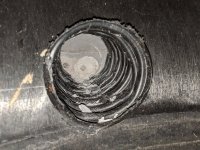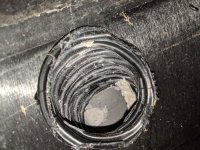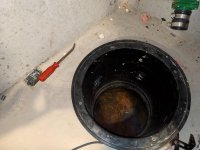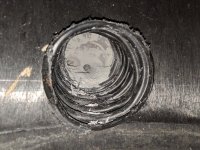Gary Martinson
New Member
Hi, noob DIYer in NE Wisconsin here. I'm building my basement and as I'm going through I'm finding various issues. The latest is the sump pump. I had never heard it run, so I opened the sealed pit and it was bone dry, even after a bunch of rain over a week or so. I poured water in and, sure enough, the sump pump was dead. I did a bit more investigating and found that they put caps inside the weeping tile inlets, about six inches inside the inlets. I've purchased a new sump pump, but I need to figure out what to do about the inlets before I install that.
My "brilliant" idea was to drill 1" holes in the caps, put some large toggle bolts in there and try to yank the caps out. I believe the caps are plastic, but my drill bit didn't want to get all the way through the first cap.
Everyone I've spoken to (plumbers, building inspectors, home inspectors) has indicated the weeping tile inlets should NOT be sealed, which makes sense to me. Any ideas would be greatly appreciated before I have to blow loads of $$$ on a real plumber.
Thanks in advance!
Gary
My "brilliant" idea was to drill 1" holes in the caps, put some large toggle bolts in there and try to yank the caps out. I believe the caps are plastic, but my drill bit didn't want to get all the way through the first cap.
Everyone I've spoken to (plumbers, building inspectors, home inspectors) has indicated the weeping tile inlets should NOT be sealed, which makes sense to me. Any ideas would be greatly appreciated before I have to blow loads of $$$ on a real plumber.
Thanks in advance!
Gary




